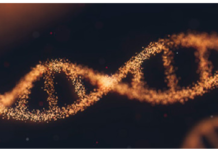
a new blood test that is minimally invasive and rapidly detects thousands of rare genetic diseases in infants and children using a mere 1ml of blood.
Developed at the University of Melbourne and Murdoch Children’s Research Institute in Australia, the test rapidly detects abnormalities using proteomics to simultaneously
analyze the pathogenicity of thousands of gene mutations that cause rare genetic illnesses.
The single-drop blood test sequences of proteins present in the genes rather than the genes themselves to discover how genetic changes within those proteins affect function and lead to disease. According to the scientists, the test is cost-effective, potentially eradicating the need for other functional tests, and may be applicable to thousands of different diseases. Results of the test are typically available within three days, providing patients with earlier access to any available treatments.
Getting the Right Diagnosis
There are more than 7,000 types of categorized rare diseases which affect approximately 300 to 400 million people worldwide. These diseases are caused by genetic mutations that exist in more than 5,000 known genes. The new test focuses on rare genetic illnesses known as monogenetic disorders, such as cystic fibrosis and mitochondrial disease, that are caused by a single gene alteration or mutation.
According to the National Organization for Rare Disorders, 25 to 30 million Americans are living with a rare disorder. A condition is categorized as rare if it affects less than 200,000 individuals.
Global Genes states on its website that 400 million people worldwide suffer from a rare disease and half of those diagnosed are children. It also states that 80% of those diseases are genetic and 95% of rare diseases lack treatment approved by the US Food and Drug Administration.
On average, it takes about five years to accurately diagnose a rare disease patient. During that period, that patient sees various specialists, undergoes difficult tests, and potentially faces the wrong diagnosis, Barr said.
Initial results stemming from the new clinical laboratory test are encouraging, but more research and clinical trials are needed before the test can be used on a widespread level.






















